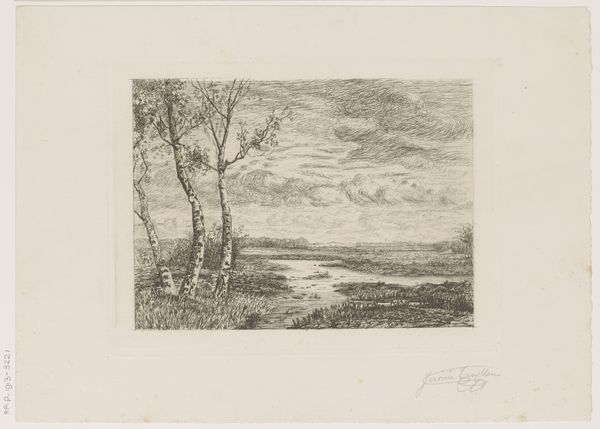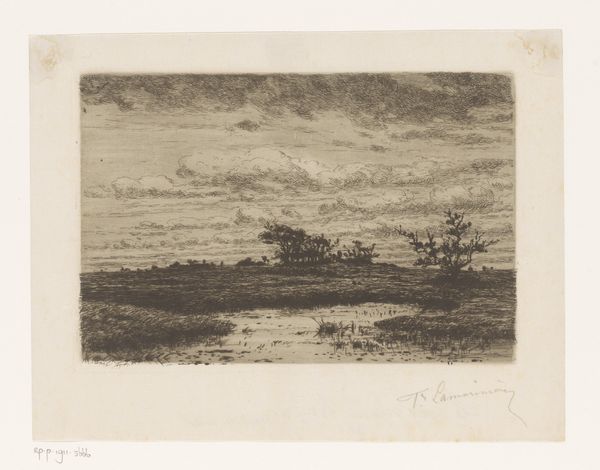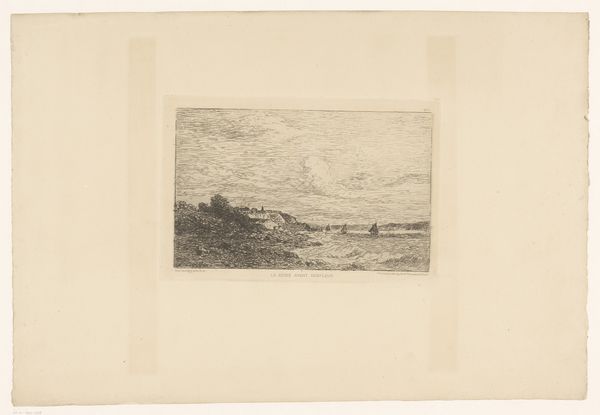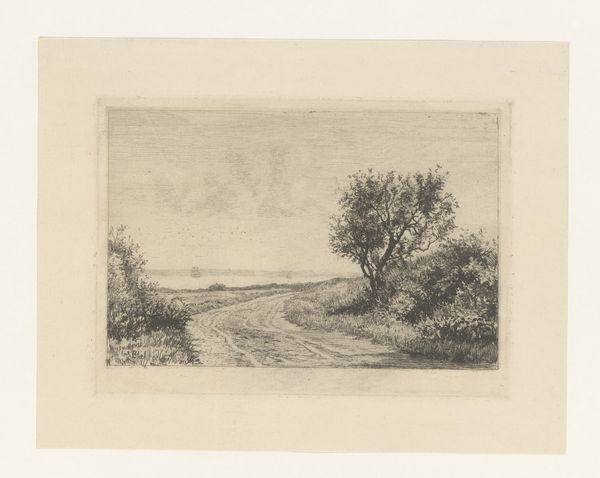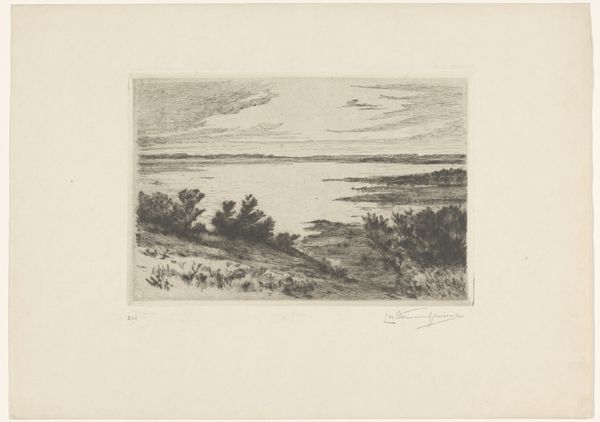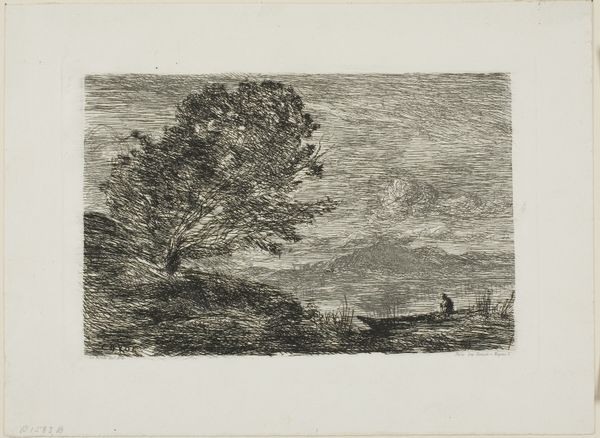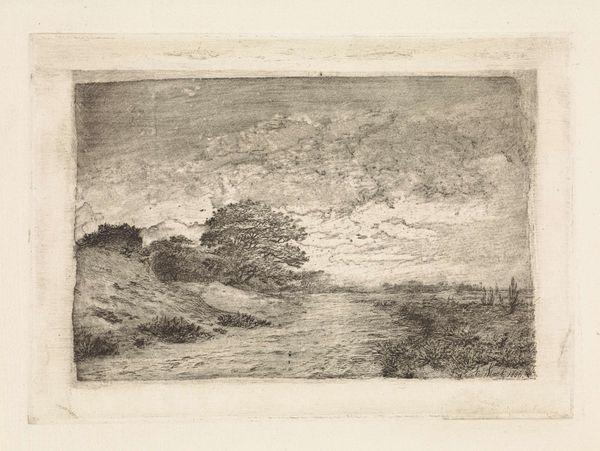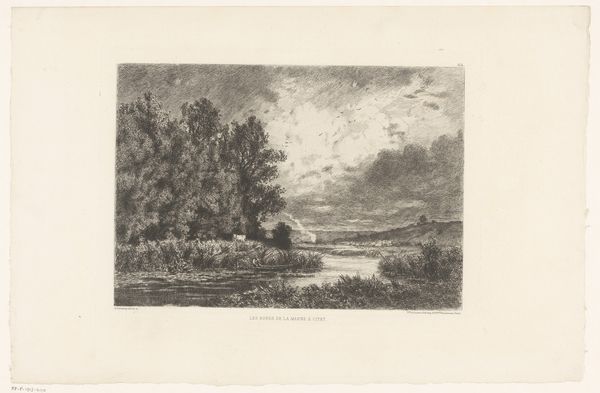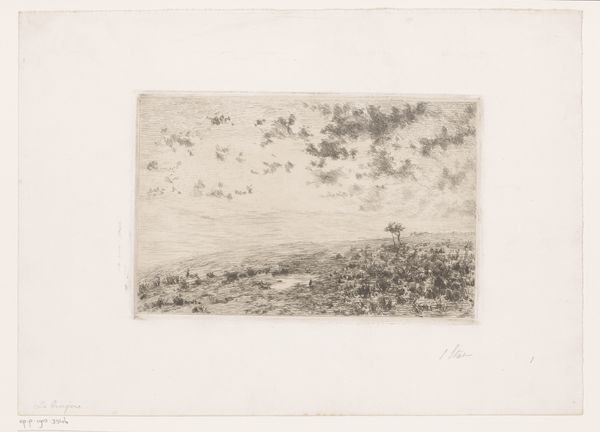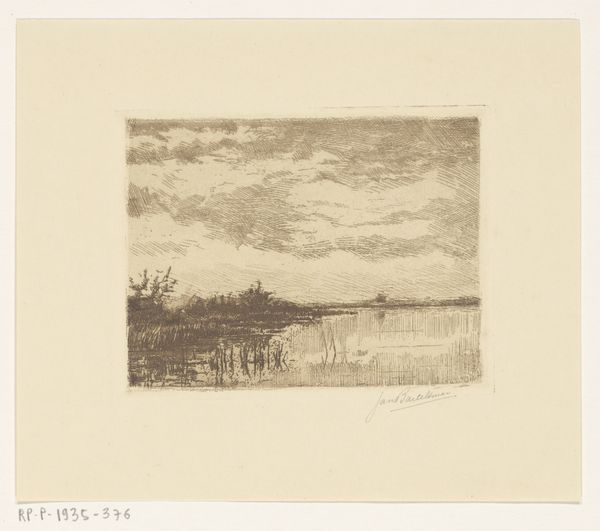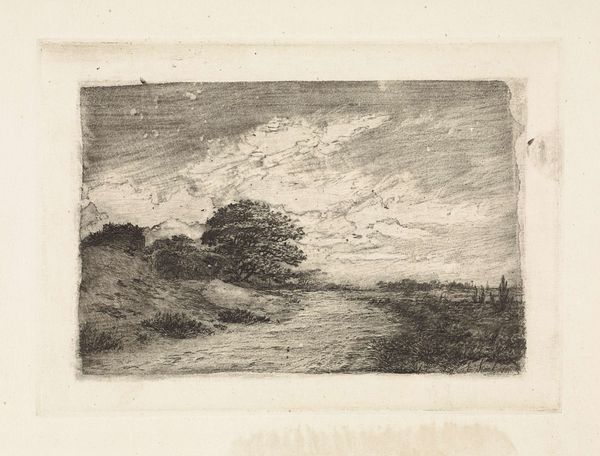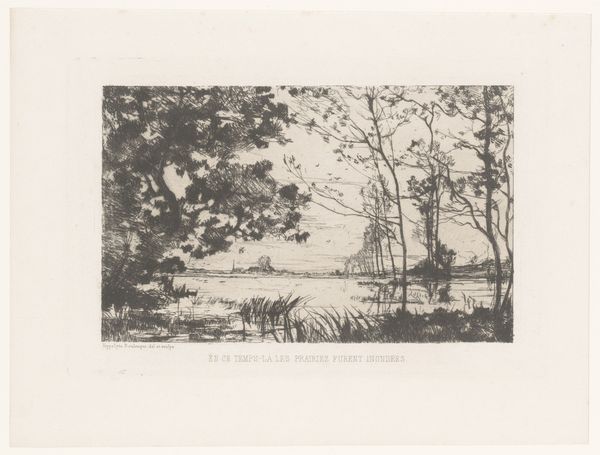
Dimensions: height 201 mm, width 258 mm
Copyright: Rijks Museum: Open Domain
Editor: We’re looking at "Landscape with Three Birches" by Jérôme Tuyttens, a pencil drawing from somewhere between 1850 and 1883. It’s quite small, and the detail is remarkable. It feels… melancholic, almost like a memory. What do you see in this piece? Curator: The birch, of course, is key. Throughout northern European folklore, the birch is deeply entwined with themes of purification, renewal, and beginnings. Considering its bright, almost luminous bark against a landscape rendered with such delicate shadow, does it strike you as a promise amidst a potentially harsher reality? Editor: I hadn’t thought about it that way, but I see what you mean. The birch trees almost seem to glow compared to the darker landscape around them. So, is Tuyttens hinting at hope or resilience? Curator: Perhaps both, or maybe it's about memory itself. The romantic era often used landscape to evoke specific emotional responses. The birch, traditionally tied to cleansing and new starts, set against this misty, somewhat indistinct backdrop… does it suggest that even the clearest symbols are filtered through the lens of personal experience and cultural understanding? How might a 19th-century viewer have understood it? Editor: So, the image isn't just about the trees; it’s also about the ideas and feelings we associate with them. Curator: Precisely. The landscape and its symbolic language work together. How we perceive it changes, and that's part of its continuing power. Editor: It’s fascinating to consider how the cultural significance of something like a birch tree adds layers of meaning to the artwork. I definitely see this piece in a new light now. Curator: And that shifting perception, the dialogue between past and present, is what keeps these landscapes alive for us today.
Comments
No comments
Be the first to comment and join the conversation on the ultimate creative platform.
